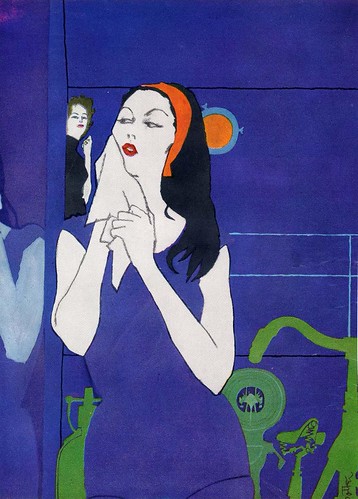
So begins an article on Jack Potter in the December 1958 issue of American Artist magazine.
I must whole-heartedly agree with the sentiment expressed in that first paragraph.
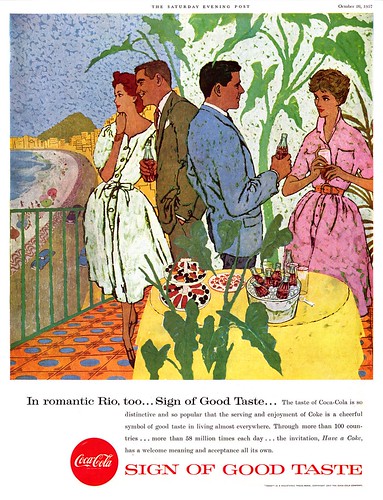
If you who read this blog ever feel like you're listening to someone who knows what he's talking about, believe me, I'm learning right alongside of you. Much of what I write here is based on a combination of the scant research materials available on the history of illustration and my own observations and intuition.
Beyond that, we have been fortunate to have the benefit of having many far more knowledgeable folks generously share their insight and personal experience with us.
But this week, I have to confess I feel really out of my depth.
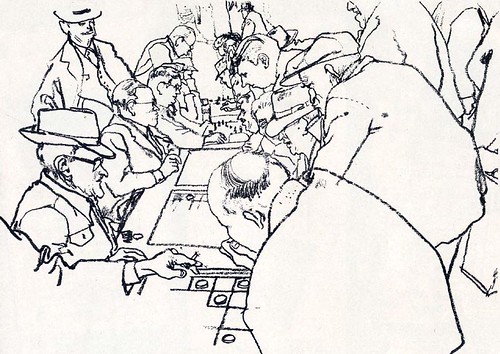
Because as much as I like a lot of the work we'll be looking at this week, I feel I lack the education in fine art that would allow me to speak in any sort of informed way about these artists I am labeling "the Avant-gardes".
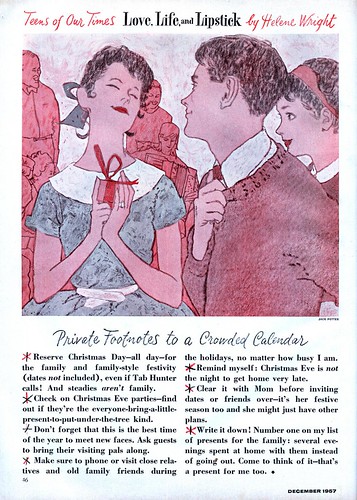
So once again, employing mostly observation and intuition, I must say that I think this group of artists, rejecting to a certain degree the mercenary circumstances of the industry they chose to work in, tried to find a new path -- a situation that meant their work often looked like it had one foot in the commercial art studio and the other in a fine arts gallery. Their attitude toward their work seems to confirm this idea: Jack Potter, for instance, is said to have entirely rejected the notion of working from photo reference - a practice that had become de rigeur among the artists of the Cooper studio and their peers. Potter only worked from the live model and sketches done on location - hardly the typical approach of the average commercial artist.
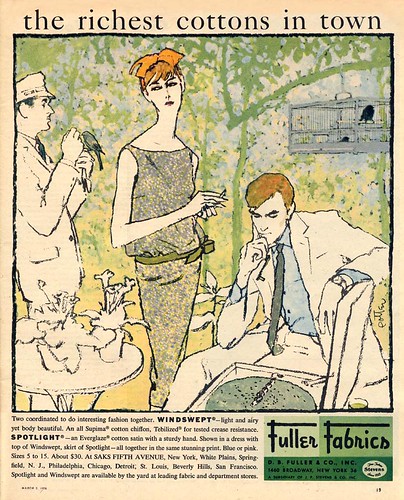
From American Artist:
"As a young artist whose earlier influences were hardly more prosaic and mundane, the glittering experience of meeting the smart, crisp world of good taste and style gave him all the modern surface manners but left him thirsting for concepts. To reinforce this need, he attended night classes in the now-defunct, fine-arts Jepson School. Under the inspiration of Rico LeBrun, he formed the basis for his convictions and the integrity of his direction."
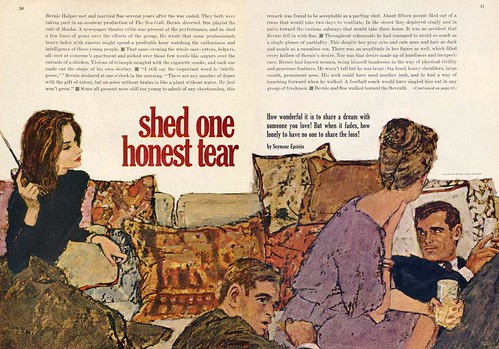
"Compare Jack Potter to the older line of illustration and he does not fit the mold. Place him with the newer illustration and he fits the description easily. He may not be 'moderne' but he is modern; he may not be 'contemporary', but he is contemporaneous. If he scorns the trend to the functional and the modern styles, it is because this is not art."
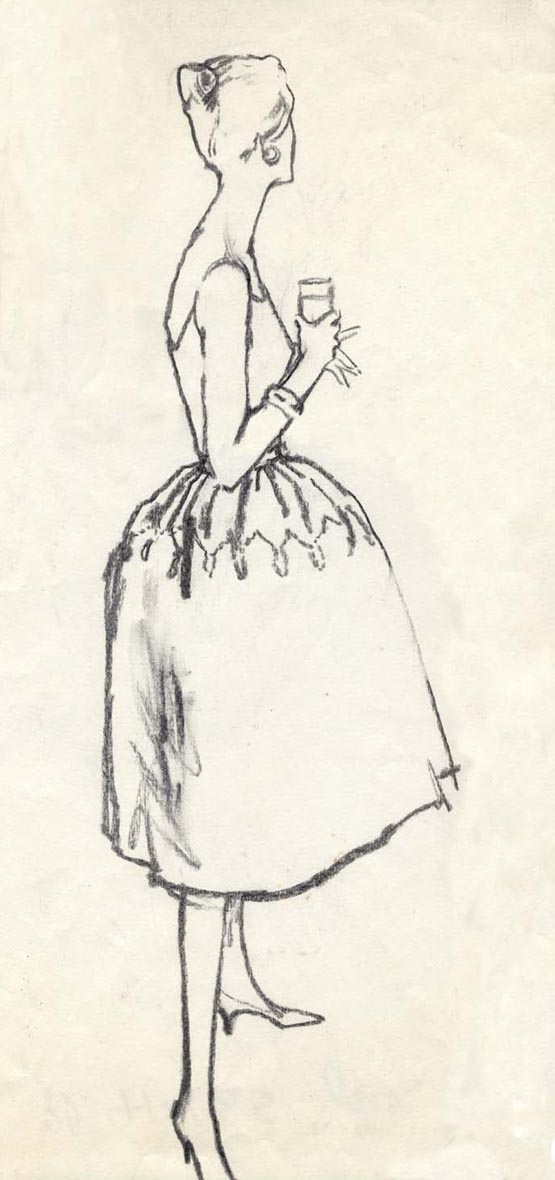
"What I'm after," said Jack Potter, "is something else. The world is chaotic. People are searching for love, for themselves. What I want to create is the thing that is the better part of you!"
*My thanks to Dan Zalkus, who studied under Jack Potter, for providing the article from American Artist and most of the scans you see in today's post.
There is a thorough article about Jack Potter in Illustration magazine #18.
My Jack Potter Flickr set.
There's a great story about Jack Potter in Illustration magazine. I can't remember what issue.
ReplyDeleteI think perhaps, Potter's fashion orientation, may be part of the reason he drew from the model (or life), instead of photographs. Fashion illustrators are accustom to drawing from the model. I think it is easier to be subjective, and it demands editing the information, when drawing from a model or from life... therefor, a less literal interpretation and a more Avant-garde' look is created... and perhaps, not even entirely intentional.
ReplyDeleteTom Watson
I agree with Tom-- to some of my oldest bosses, Fuchs was the transitional style... Art deadlines are compressing at this time, as color photography methods coming down in time and price force most of the painterly illustrators to do bit work, concepts, teach or retire. The '50s-'60s illustrators are using posed photos, sometimes rendered into color from quickie b/w Polaroids. Flats of scrubbed color are made trendy-- quick is king.
ReplyDeleteBut, unlike Tom's perspective, I don't think of Potter's reaction as Avant but a logical commercial direction; the results definitely muscle in among the photography to grab attention for sales. I was shocked to see so many hard linear graphic styles shown in Idea Books like Westvaco and U&lc.
I wouldn't be surprised to see a time-line prove that such free-style mass media actually accelerated the '60s counter-culture. By the time my earliest instructors begin to teach ('72), traditional drawing and painting is scorned as timid, at least on the West Coast.
The thing that immediately impresses me about Potter's style is his cruel economy of lines. A good writer over a period of a lifetime learns to convey his message with the precise amount of words, no more or less than required. Artists do the same thing, and here we see a real craftsman giving his figures the exact proper amount of weight. Beautiful.
ReplyDeleteI just want to say again how much I LOVE this blog. Thanks for all your research and for bringing these beautiful images to us, as well as your insightful commentary.
ReplyDeleteNow I have a question for you or other readers. I'm looking for the name of a fashion illustrator who worked for Harpers Bazaar in the 1960s. Her first name, if memory serves, was Katrina. She did bold ink drawings with beautiful exciting and fluid lines. I think she also taught at Parsons for many years.
I figure, if any one knows, it will be one of you.
Thanks.
Jack was not only a great illustrator and teacher he was an amazing human being. He could tell by looking at our work "were we were at" in our lives. When models didn't show up he would model for us.
ReplyDeleteI did a drawing of him that I cherish, and shows a vitality that came from being in his class. When he thought you were doing "good" he would stroke your shoulders and say "good-good" in a very comforting voice. However if he thought you were wasting your time and his, he would say "even God can't help you.
Jack was not only a great illustrator and teacher he was an amazing human being. He could tell by looking at our work "were we were at" in our lives. When models didn't show up he would model for us.
ReplyDeleteI did a drawing of him that I cherish, and shows a vitality that came from being in his class. When he thought you were doing "good" he would stroke your shoulders and say "good-good" in a very comforting voice. However if he thought you were wasting your time and his, he would say "even God can't help you.
the illustrator you are talking about is katarina denzinger. she and jack potter were two of my favorite teachers.
ReplyDeleteGod Bless Jack, Thats all I could say... he certainly left all of his students a gift, a part of himself
ReplyDeleteJames Bello
jimbelloart
email me for pic of Jack in the Classroom :
jbello2@optonline.net
his cruel econonomy of lines: he used to croon to us
ReplyDelete"marvelous se-lec-tivity..." or "what is it the most?" there is not a day that goes by that i dont use his lessons. miss you jack.
I stumbled over this blog today while trying to tell my son about this extraordinary drawing teacher I had at SVA in the late '60s and early '70s. I took--three times--his class called "Drawing and Thinking: A Gymnasium for the Mind."
ReplyDeleteI would go back to his class every couple of years, to knock all the cobwebs out, loosen up the tight screws in my head, and refresh myself.
My favorite lesson of his was to look at the "negative space" and draw around it. It was like the old story of Michelangelo cutting away from the stone "everything that was not David."
Jack made me think of drawing the way writers think of Haiku: nothing extraneous, but everything essential, seen clearly and presented with simplicity.
As a person, he could also be brusque and impatient with fussy over-thinkers, yet encouraging and warm towards those who came into his studio with an open mind, open eyes, and focus.
Thank you for this insightful revisiting.
Katarina Denzinger was my FAVORITE teacher in Parsons. She taught us how to think "out of the box" I am eternally grateful to her….....I loved her critique, “too cartoony!" with a German Accent. She never could remember our first names. Always just our last ones. and she always knew all your work you have ever done. I loved that teacher.... Where is she now??....
ReplyDeletei would like to visit katherina denzinger now.......she was my favorite teacher at parsons in the late 1970's . I just looked at a Degas drawing and remembered her talking about his line. now, much older, I "get" it. I liked how neurotic she was too........like she had an interesting life outside of being a teacher....wish I could reconnect with her again after more than 30 years.....
ReplyDeleteI studied drawing under Mr. Potter at SVA in the 80´s and strangely enough there is not a day especially when I draw that I don´t think of him. His classroom was up in the 2nd floor of the E23rd St building. People would pile up benches and balance themselves on them to get a place. His class was always full. He had a very strong and gentle voice and quite a task master, but always with an example and love. Where ever he is... Thanks Mr. Potter!
ReplyDeletePS: "chicken scratch" one of his favorites don´ts
Jack was a dear friend and mentor to me...I studied with him and I modeled for his classes at SVA and the Society of Illustrators. Besides Jack's amazing intuitive sense about everything, he always had great words that seemed to summed up a message he wanted to convey to his students. One of my favorites and one I constantly refer to is..."A Statement of Fact is Used as a Basis for Reasoning"!
ReplyDeleteI miss Jack so much and cherish all the times we had together. I had the luxury of a close friendship with him...and was influenced in great ways that totally shaped who I am today!!
Rochelle
Jack was a dear friend and mentor to me...I studied with him and I modeled for his classes at SVA and the Society of Illustrators. Besides Jack's amazing intuitive sense about everything, he always had great words that seemed to summed up a message he wanted to convey to his students. One of my favorites and one I constantly refer to is..."A Statement of Fact is Used as a Basis for Reasoning"!
ReplyDeleteI miss Jack so much and cherish all the times we had together. I had the luxury of a close friendship with him...and was influenced in great ways that totally shaped who I am today!!
Rochelle
I was student and friend of Jack's. He will be deeply missed. His desire to motivate me to visit Holland one day lead to me finding my place there. He made a profound difference in my life indeed.
ReplyDelete